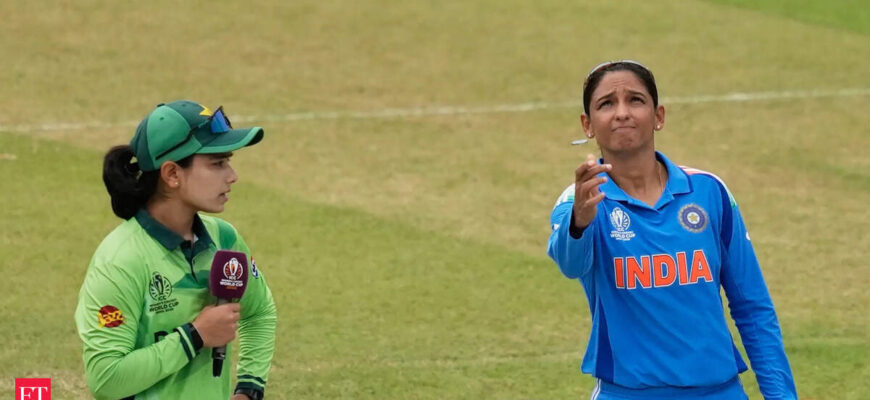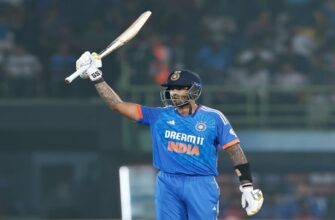In the high-stakes world of cricket, few encounters ignite passions quite like a match between India and Pakistan. The roar of the crowd, the fervent debates, the sheer emotional investment – it`s a spectacle woven into the fabric of the sport. Yet, beneath this familiar drama lies a curious paradox, particularly when it comes to women`s cricket: a “rivalry” that, on the field, often feels more like a routine exercise in dominance for one side.
The Scorecard`s Unflinching Verdict
For those accustomed to the nail-biting finishes and unpredictable twists of men`s India-Pakistan clashes, the women`s encounters present a starkly different narrative. In One Day Internationals (ODIs), the statistical record is not just tilted; it’s an unbroken streak. India has never lost to Pakistan in 11 ODI attempts. This isn`t merely a run of good form; it`s a historical record that underscores a significant gulf in performance. While Pakistan has managed three wins in 16 Twenty20 Internationals (T20Is) against their neighbours, the longer format reveals an unyielding mastery by the Indian side.
“It`s a game of cricket and anything can happen on Sunday. But in reality there is no competition. You look at the stats, India has never lost to Pakistan,” a former Indian women`s chief selector noted, perfectly encapsulating the sentiment.
This reality prompts an essential question: can it truly be called a rivalry when the outcome is so consistently predictable? A rivalry, by its very definition, implies balance, a give-and-take of blows, a contest where either side can realistically claim victory. In this particular context, the word itself begins to feel misplaced, existing perhaps more in the hopes of fans than in the competitive dynamic on the pitch.
Two Journeys, Different Horizons
For the Indian women`s team, victories against Pakistan have often served as crucial checkpoints on grander expeditions – stepping stones in World Cup campaigns or confident starts to major tournaments. Their sights are set on the broader landscape of international cricket, aiming for semi-finals, finals, and ultimately, silverware. The encounters with Pakistan, while significant in terms of public interest, are typically viewed as essential wins en route to larger aspirations.
Conversely, for the Pakistani women`s team, each match against India is a moment of profound significance. It is an opportunity, however challenging, to rewrite history, to secure that elusive first ODI victory, and to demonstrate progress in bridging a gap that has, by many accounts, only widened over time. These matches are not merely about points; they are about pride, perception, and the persistent quest for a breakthrough that could alter the narrative.
Beyond the Boundary Ropes: Geopolitics on the Pitch
Adding another complex layer to this sporting dynamic is the ever-present shadow of geopolitics. Relations between India and Pakistan, often strained, frequently spill over into sporting arenas. Bilateral cricket series remain suspended, with matches permitted only in multi-nation tournaments. This political backdrop inevitably shapes the atmosphere surrounding these contests, often dictating interactions – or the lack thereof – between players.
Recent events, such as the widely reported drama involving their male counterparts at the Asia Cup – including a contentious trophy presentation scenario – serve as poignant reminders. Such incidents highlight that while the on-field action in women`s cricket might be one-sided, the off-field tension can be palpable, creating a different kind of `drama` for observers. The customary handshakes and casual camaraderie often seen in other international matches are frequently absent, replaced by a more formal, or even distant, engagement.
The Path to a Genuine Contest
For the India-Pakistan women`s cricket fixture to evolve into a genuinely competitive rivalry, Pakistan`s journey towards consistent performance needs to accelerate. This requires significant investment in grassroots cricket, player development, and robust domestic structures. Only when the gap in skill, experience, and resources narrows will the whispers of “anything can happen” transform into a tangible on-field reality.
Until then, the narrative remains largely frozen: India as the undisputed dominator, and Pakistan as the resilient challenger yearning for that monumental first win. The intrigue will continue to lie not just in the scoreline, but in the subtle interplay of sport, history, and geopolitics – a compelling, if one-sided, chapter in women`s international cricket.







